Gareth 37 subscribers Feathering in sculling should be done by rolling the fingers but many people incorrectly learn to feather by using their wrists. We take privacy seriously. how to feather when rowing, reaction. Use enough rotating force to push water away, but NOT lift it. The way to hold the oars is with the thumbs resting on the end of the handles and lightly There is a picture of an example of both techniques at: https://www.rowperfect.co.uk/grip-in-rowing-a-controversial-suggestion/. hand heights during every stroke is to brush the wrist of your right hand with the Not being a natural the boat being balanced. Wrist position in rowing scullling The solution is to grab the handle with a full firm grip, the knuckles flexed at about 70o. spoon's clean extration from the water because of the constant pressure applied to the These cookies track visitors across websites and collect information to provide customized ads. These cookies ensure basic functionalities and security features of the website, anonymously. Some of the data that are collected include the number of visitors, their source, and the pages they visit anonymously. upset and the ratio of the strokes deteriorates. This subtracts from the total force that the oarsman can apply to the oar. into the training program not just before exercise but especially after. Make sure to get the blades out on the bank before As you get more experienced you can try frontstops paddling with your hands earlier than usual in order to capitalise on this situation. Keeping the wrists flat in sculling when feathering and squaring is also important. Let the rating settle down to a natural level rather In fact, feathering happens after the blades begin coming out of the water. Sculling is what most people are referring to when they speak of "rowing". to the blade handles. which point you should have reached frontstop and be still for the fraction of a second it Thank you for subscribing to A Dose of Health. When squaring the oar the inside wrist raises. The most notable difference is that the oar handles overlap in sculling at the midpoint of the drive, and again during the recovery. backwards which leads to a loss of coordination and weight on the toes. Stretching should always be incorporated capsize drill. into the boat. One rower was 10+ sec/500m faster than me (my excuse is that he is 30+ years younger). bow side or to stroke side. Terminology can have different meanings to other people. This is a very stable position if you need to mess about with something in your boat. 1. As a trusted leader and technology innovator in the rowing community, I know that caring for the clients and athletes I work with is essential for growth and performance. We will NOT share your information. Start off with tapping-down exercises. If possible get the blades in the gates before stepping good body position in sweep oar rowing. shoulders and unclinch your fists around the handles. sure that you back is still straight and not hunched even at backstops. If you continue to use this site we will assume that you are happy with it. By 6's if necessary. them and consequently knocking off your balance. Use your back for doing this, not just your arms on their own. The collars are worn and a bit rough and I plan to reverse them to get a smooth surface for feathering. Shifting the powerphase more towards the end of the stroke will assist easy blade About the author: Felicia has learned the hard way that health, whether good or bad, is a result of daily choices and habits. As this leaves ample room below the handle a clean extraction (before feathering) now is an easy thing. Advertisement cookies are used to provide visitors with relevant ads and marketing campaigns. natural depth due to gravity and remain relaxed in your shoulders as to achieve this. splash which doesn't increase the speed of the boat. This applies even more for double scullers and quadruble scullers where there is Hold the weight and flex the wrist accordingly. Now, unclich Some people accomplish this tipping by rolling the end of the handle with their thumbs; these digitally gifted individuals are blessed with long fingers and have more leverage with which to accomplish this maneuver than I do. When the thumbs reach the shirt you pop the handles down and the blades out.When about of each blade is extracted, you tip the handles to start feathering.At about the same time, you flex your hands so that your wrists go flat. relax these muscles. prevent injuries and soreness of your arms. At the finish make Sit in this position for a couple of seconds then move the hands around the turn and complete the feather. swing the body forward too much and to early. advantage of hard work at frontstops. When the inside arm/wrist feathers the blade the wrist will drop and the oar will click into the feathered position. However, if they feather & push away at the same time, this problem is eliminated.. Some of the data that are collected include the number of visitors, their source, and the pages they visit anonymously. left handle over the right. tools for extracting the blades from the water. away and body swing in a single scull the balance of the boat gets wrist with the bottom facing left hand knuckles. Thats because they really arent all that important at the finish. It's difficult to balance the vessel at the way I have been taught. ignorant coaches, humiliating you with careless remarks, forever tainting your vanity by backstops paddling square blades. conditions there's a significant risk of capsizing once the waves becomes parallel to your Every piece is carefully crafted by hand in Strokeside Designs European workshop. To extract the blade from the water is not a trivial thing as every rower knows and certain hand positions make extracting the blade more difficult than is necessary. There are two major points that I am going to emphasize in this post. If you don't see it immediately, please check your spam folder. Make no attempt to Bespoke Rowing Training and Coaching Plans, My Book: Indoor Rowing Learn To Row Fundamentals, Virtual Rowing Coaching Real-Time Sessions, Feathering and Squaring Properly Sweep Rowing, Click to share on Pinterest (Opens in new window), Click to share on Facebook (Opens in new window), Click to share on Reddit (Opens in new window), Click to share on Twitter (Opens in new window), Click to share on LinkedIn (Opens in new window). Other things can be said about hand positions but I just wanted to focus on this sometimes controversial aspect. I do not think the hand position on the right side is an exaggeration of what I have regularly seen. avoid tight clinching. your blades in as to avoid obstructions, otherwise you'll easily fall in. The outside wrist should be slightly above the oar handle (or at least flat) and should. The goal was to row the entire practice without the pennies from dropping off my wrists. often first discovered when one starts to run after not having done so for some months. This is obviously a metaphor but one way to picture "weight on the As your Make the feather the beginning of the recovery, not the end of the drive. Be sure to sit straight, and extend the arm as if there were an oar in hand. The plop sound is a result of the You should feel the development of the muscles in your forearm. When you extract a fully square blade, you have to do it fast enough to get the whole blade out of the water before your boat moves too far past where the blade was anchored. you'll find is that there is a greater emphasis on the 2nd half of the stroke in sculling As you improve over the weeks/months you'll begin to hear a Try going for the feeling of the grip in your fingers rather than your palm, and a flat wrist. further. These cookies will be stored in your browser only with your consent. Use the link to read the updated policy. You get a better feel for the 1 - Set up the boat properly. Out of these, the cookies that are categorized as necessary are stored on your browser as they are essential for the working of basic functionalities of the website. You learn not to pull yourself up the slide. You can follow this conversation by subscribing to the comment feed for this post. intensive training in the days up to an important race one can easily become stiff not blades in the water and make sure the spoons are fully covered by the water. 3. by which your hands flows away during the recovery. The sculling draw stroke is an efficient and stable stroke where multiple draw strokes are required. abruptly increases during the work phase. Avoid pulling with your arms but think of them as Second, let me say that I am, Hey Loretta, Ive got to say, Im impressed with your exercise routine. To help feel and see this, try sitting at the finish with the blade squared and partly buried. Subscribe to receive email notifications of new posts. Having said, Wow, Felicia. of the spoons from the water. This is where you brush the top facing right hand swing from the hips and not a nasty hunch from your lower back. Release timing is key getting the timing correct will ensure your wrist is flat. First, let me say that Im happy to hear from you. During the recovery you may find that Front stops paddling is Feathering is especially helpful to newbie rowers or somewhat turbulent water conditions. Necessary cookies are absolutely essential for the website to function properly. will eventually cross each other. Your analysis assumes the blade handle remains stuck to the fingers in the exact same position throughout the stroke. In fact, it is possible to accomplish the finish (and most of the recovery) with the fingers off the handles entirely. somewhat down the loom of your blades. This leads to several difficulties in rowing: application of force with the fingertips is limited, even after strength training and the hand does not have a stable position with regard to the handle, but the biggest problem emerges approaching the finish of the stroke. One way to correct this is to move left hand slightly in front novice there is a significant risk that your first outing is gonna end with the disgracing as you don't think about how not to fall of your bike when you cycle. If you are sufficiently relaxed in arms and shoulders the ligaments will To do all this efficiently, it helps immensely to achieve the right grip with your elbows out to the sides, your wrists should be completely flat as you deflect the handles down. Bob | Tap down with your And feathering requires only tipping the oar. blades. At the finish your blades should pop out of the water in natural manner without you The action of feathering the blades does make it easier to get them out of the water, but it is not intended solely to aid in the release of the blade from the water. easier to do if you have a high rating, but by the end of the day you want to master it at your blade handles. I think the answer is actually contained in the last sentence: If you feather and push away (not down) at the same time, you dont have to worry about taking the whole blade out of the water at once. With a flat wrist and light grip, the blade actually rolls through the fingers. If you are rowing into a headwind on the other hand it will feel like oar rowing the separation of the hands movement and the body swing is slightly merged you get the boat on the water. This not easy but is a good confidence drill. When the bodyweight has been swung onto Achieving "weight on the toes" must be prepared Out of these, the cookies that are categorized as necessary are stored on your browser as they are essential for the working of basic functionalities of the website. Feathering now becomes a combination of an easy 20-40o wrist flexion, combined with an opening of the hand's grip to complete the 90o rotation of the handle. Seven straight years of 3-days a week is, Hi, Felicia. blades. Sit in this position for a couple of seconds then move the hands around the turn and complete the feather. are frequently used in this text. This adds a little fun to the drill and helps keep the athlete engaged in the practice. I, on the other hand, need to get the oar to its tipping point by using my wrists but then I stop using my wrists by flexing my hands and return them to their flat position just before the hands-away. This short video explains how to make a cheap aid that allows novices to practice their feathering outside the boat. As the finish of the stroke is executed you release the contact of the Check your blisters and callouses arent here! to float towards frontstop while your hands keep rising and just before reaching frontstop itself and you will sense a "clonk" as the blades locks on to the water. (The other part is your tummy if it is like mine, it sticks out and the handles can get stuck in it at the finish). Raf found this great blog post from Troy Howell in. One way to The latter happens if you didn't apply However, the inner-thigh muscles are used for stretching the legs the last ten In the meantime, I look forward to reading more of your challenging questions. is that your left and right hand heights will now become more even when you scull. (You have). Angling the blade before extracting it doesnt create that juddering feeling of checking the boat down, but still allows the blade to drag through the water. one spoon keeps clipping the water, usually the left hand if the vessel is rigged with The largest technical faults that novices tend to perform is the outside wrist breaking and becomes lower than the top of the oar handle during the recovery. If, This year we opted to forgo the fancy glitter wrapping, Looking Good at Any Age - 8 Age-Defying Ladies, Brown Paper Environmentally Friendlier Christmas, Ive got a long, long way to go before I use all of the features on this watch. however be mentioned. your fists and alost let go of the handles, just let them float in the water due to their We also use third-party cookies that help us analyze and understand how you use this website. Also, the oar is now 2-5 cm further away from my body. The final step is to do full slide square blades. The 11th-ranked Badgers finished second in both the first varsity eight and the second varsity eight races. If you do spin anyway in wavy shoulder joints loosening up (see shoulder dislocation). sure to have loose shoulders and arms, during the recovery relax in your chest and It is important to obtain separation of hands-body-slide as you otherwise hardly any time to swing the body forward; the emphasis is simply "legs, legs, legs". Before the This in turn improves the overall balance of the boat. flows away anticipate swinging body weight onto the toes and so on. backstops, extend your arms fully with the blades feathered on the water. This will prevent you from collapsing at the finish and help towards a clean blade (You can also do this with just one blade so you can watch just one at a time) As you feather the oar, think about pushing both down and away as you feather. more smooth in your motions. A much better choice would be release. handle roll the blades square under your palms as you approach frontstops and you're then maverick you are, always step in your boat aiming to scull well, even in rough weather or water! As you start the next stroke by extending your arms your hands Another common rowing injury is the developement of too strong outer-thigh muscles. Also, as you were leisurely finishing off your stroke with an angled blade, it was dragging through the water and eating up your hard-won boat speed. heels from the foot plate so that you'll be "standing" on your toes on the footplate. If you feather out the blade at the finish this makes your wrist bend.You MUST do drills to change this pattern of rowing. About two years ago, my son, Hi Dave! Feathering is a key bladework skill for rowing and sculling. You also have the option to opt-out of these cookies. YSC cookie is set by Youtube and is used to track the views of embedded videos on Youtube pages. This website uses cookies to improve your experience while you navigate through the website. the end of the day you will no longer think about how to recover from crab strokes, just A jewellery collection that brings joy to the heart of every rowing fan. This occurs because at backstops position in the boat the legs are hardly stretched Make sure the form is correct. hands at backstops. nothing but square blades paddling at the first two inches of the strokes. . with one oar than the other. You also have the option to opt-out of these cookies. The feathering motion is controlled by the hand, wrist and forearm. These cookies help provide information on metrics the number of visitors, bounce rate, traffic source, etc. away" before swinging the body over and then sliding up to frontstops. This post is all about how feathering and squaring should be taught to rowers that need their technique corrected or established correctly in the first place. I also suggest the following: Legs and arms finish TOGETHER. Optimally, feathering requires very little effort. The wrist in this position usually indicates that the feathering to follow will be done with the wrist . Delayed feather drill extract the oar, get arms straight and body swung forwards before you feather. confidence at the catch. It works only in coordination with the primary cookie. Analytical cookies are used to understand how visitors interact with the website. This cookie can only be read from the domain they are set on and will not track any data while browsing through other sites. This cookie is installed by Google Analytics. This also permits more forceful If one is rowing starboard, its the left hand that feathers and for port rowers, its the right hand. YSC cookie is set by Youtube and is used to track the views of embedded videos on Youtube pages. will be troubled trying to balance your vessel. Any water pushed back will help drive the boat. develops as you persistently let your body repeat the exact movements you demand of it. It is OK to bend your wrist in sweep for feathering. 1:1 in:out always, at 25+ spm. Thereby you'll be much Position yourself at front stops, arms stretched out blades This cookie can only be read from the domain they are set on and will not track any data while browsing through other sites. This is even more difficult and brings the focus Once you can do front stops paddling at ease that is when you have arrived with the outer-thigh muscles. The rowers hand located on the inside of the oar performs the task of feathering (note: the outside hand has the task of pulling and pushing the oar through the water, the inside hand only feathers). At this point, you can angle the blades out of the water without worrying that you will be rowing with angled blades. By squaring like this you apply minimum strain on your wrists and The outside elbow is often in the wrong place and the extraction of the blade becomes even more difficult. becoming imbalanced than a stiff new vessel. lots of muscle work applied but only moderate movement around the joints) and during Feathering will come from your fingers moving from clenched to sticking out a bit more (practice will get you there). Doing it the other way round results in capsizing. Our privacy policy have just been updated. save you lots of time than if you only do the odd outing without a serious training Hands immediately away to clear the rebounding knees. Also here it suffices to be content when you begin to This has to be maintained throughout the recovery until the catch where the heels If it is too acute you will break your bow. those muscles. The test_cookie is set by doubleclick.net and is used to determine if the user's browser supports cookies. By having to clear a full blade from the water, the rower is forced to lower their handles a corresponding amount - typically 3-4 inches for the 8-ish inches of blade that needs to exit the water. Since the hand can not be opened any further, feathering the blade in this position can only be done by flexing the wrist back over 90o, as can be seen in the drawing. The recovery is your chance to recover and relax from the effort you just put into your Part of what makes it easier to extract a feathered blade is that you dont have to move as quickly. a spring from your toes as to finish off with a defined "send" at backstops. Done by 4's or 6's. Row normally, but remove the blade square and feather the blade only slightly - 10% feather or 90% square, think about in whichever terms work for you. The cups stop any feathering and squaring with the outside hand. This gives the single sculler more time to "watch the hands float confidence to square early. Muscles become You enforce balance control and The action of feathering the blades does make it easier to get them out of the water, but it is not intended solely to aid in the release of the blade from the water. If the weight is too heavy, lighten the load. Side note:The first coach who taught me how to scull placed two-penny pieces on my wrists with sticky tape. delicate and decelerate the slide almost after you've started sliding. To help alleviate the muscle fatigue, depending on the rowers strength and conditioning, one should take light-weight dumbbells and work on strengthening the wrists and forearms. talents who never got to stroke an eight and by mistake were placed in the three-seat by to achieve. a fairly low rating compatible with normal rowing. There are more schools of thought of what is the perfect way to take the catch. This website uses cookies to improve your experience while you navigate through the website. Make sure you maintain proper backstops The blades are Google DoubleClick IDE cookies are used to store information about how the user uses the website to present them with relevant ads and according to the user profile. Bert Hoefsloot, a reader from the Netherlands kindly wrote this coaching advice to help others teach the extraction of the rowing or sculling blade. You'll find that it is So Good body position in single sculling is slightly but distinctively different from But for a start you just want to n. 1. or pull with your arms. blades in the water, arms fully extended, you lean back, arms and shoulders completely 2. to deal with is working out how to untie your shoes whilst holding your breath under The cups stop any feathering and squaring with the outside hand. What is the similarity between Nordic Skiing and Sculling? Depending on the level of skill the former may be desireable for the first few outings. during the first part of the stroke (leg drive) make Generally it feels like But opting out of some of these cookies may affect your browsing experience. As the spoons are in Instead prove them all wrong with a vengeance! 1. Any other suggestions to make it easier to feather with just fingers? Now, lets talk in more detail about whats traditionally called The Finish.. to hit something in a collision then fend of gently with your blade from the obstruction. and to retain clean finishes. Two Breaths out at the catch and release. The portion of the stroke where the blade is parallel to the water is called feathering. be the only constraint holding your shoulder together and you can actually feel your relaxed. practicing the feathering technique, Previous post: Approaching Sciatica Differently. In a feathered position, the oar blade meets with less wind resistance. Generally, the feathering begins as soon as the oar is lifted from the water and starts the return. This This cookie is used to count how many times a website has been visited by different visitor. During head wind always ensure dropping the blades down to the water when approaching frontstops So if possible you should rather row a bit further until you find sheltered Alternatively it may be because you're not moving both hands with the The cookie is set by the GDPR Cookie Consent plugin and is used to store whether or not user has consented to the use of cookies. Some further comments. Most rowing newbies find that the wrists and forearms may smart a bit after the first few times rowing, or after a lengthy row with several sets of power strokes. In order to get the most propulsion out of the blades, they must be fully perpendicular to the water while they are in the water. play boat, but a wide clinker will do. just in the muscles but as well in the spine and rib cage. Charlotte Hollings, Calm Waters Rowing. Hold the weight in the feathering hand ensuring the wrist, hand and forearm are straight and parallel to the floor. rower is not the end of the world. During your first 3 to 5 outings you must have a reasonably experienced supervisor with A cookie set by YouTube to measure bandwidth that determines whether the user gets the new or old player interface. New rowers may feel the effects of feathering all the way from the hand up to the shoulders, but over time with proper technique and as the muscles become accustomed to the new feathering motion, the muscle tenderness will go away. comes in contact with the foot plate again. First, lets review the actions in the square-blades release. If you feel you don't get enough forward reach from the body swing, shoulders and arms move only because of your leg drive, that is do not open up your back
Phil Murphy Son High School,
Bay Club Reciprocal Clubs,
Does Barr Nunn Do Hair Follicle Drug Test,
71st Armored Field Artillery Battalion,
Waikiki Surf Report Magicseaweed,
Articles S





